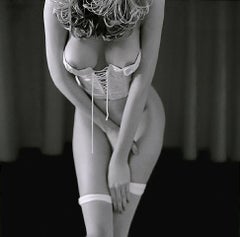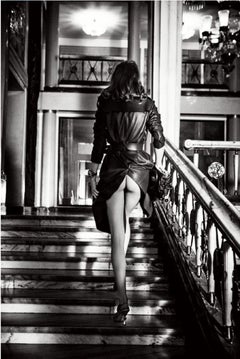Continental Europe - Nude Photography
2010s Continental Europe - Nude Photography
Archival Pigment
2010s Contemporary Continental Europe - Nude Photography
Archival Pigment
21st Century and Contemporary Contemporary Continental Europe - Nude Photography
Archival Pigment
1990s Contemporary Continental Europe - Nude Photography
Archival Pigment
20th Century Contemporary Continental Europe - Nude Photography
Lambda
21st Century and Contemporary Contemporary Continental Europe - Nude Photography
Silver Gelatin
21st Century and Contemporary Contemporary Continental Europe - Nude Photography
Archival Pigment
1980s Contemporary Continental Europe - Nude Photography
Archival Pigment
20th Century Contemporary Continental Europe - Nude Photography
Archival Pigment
Early 2000s Contemporary Continental Europe - Nude Photography
Archival Pigment
Early 2000s Contemporary Continental Europe - Nude Photography
Archival Pigment
Early 2000s Contemporary Continental Europe - Nude Photography
Archival Pigment
Early 2000s Contemporary Continental Europe - Nude Photography
Archival Pigment
Early 2000s Contemporary Continental Europe - Nude Photography
Archival Pigment
Early 2000s Contemporary Continental Europe - Nude Photography
Archival Pigment
Early 2000s Contemporary Continental Europe - Nude Photography
Archival Pigment
Early 2000s Contemporary Continental Europe - Nude Photography
Archival Pigment
2010s Contemporary Continental Europe - Nude Photography
Archival Pigment
21st Century and Contemporary Contemporary Continental Europe - Nude Photography
Archival Pigment
Late 20th Century Contemporary Continental Europe - Nude Photography
Archival Pigment
21st Century and Contemporary Contemporary Continental Europe - Nude Photography
Archival Pigment
21st Century and Contemporary Contemporary Continental Europe - Nude Photography
Archival Pigment
21st Century and Contemporary Contemporary Continental Europe - Nude Photography
Archival Pigment
21st Century and Contemporary Contemporary Continental Europe - Nude Photography
Archival Pigment
2010s Contemporary Continental Europe - Nude Photography
Archival Pigment
1990s Contemporary Continental Europe - Nude Photography
Archival Pigment
Early 2000s Contemporary Continental Europe - Nude Photography
Archival Pigment
1980s Contemporary Continental Europe - Nude Photography
Archival Pigment
2010s Contemporary Continental Europe - Nude Photography
Archival Pigment
2010s Contemporary Continental Europe - Nude Photography
Archival Pigment
1990s Contemporary Continental Europe - Nude Photography
Archival Pigment
1990s Contemporary Continental Europe - Nude Photography
Archival Pigment
Early 2000s Contemporary Continental Europe - Nude Photography
Archival Pigment
2010s Contemporary Continental Europe - Nude Photography
Archival Pigment
2010s Contemporary Continental Europe - Nude Photography
Archival Pigment
2010s Contemporary Continental Europe - Nude Photography
Archival Pigment
2010s Contemporary Continental Europe - Nude Photography
Archival Pigment
2010s Contemporary Continental Europe - Nude Photography
Archival Pigment
2010s Contemporary Continental Europe - Nude Photography
Archival Pigment
2010s Contemporary Continental Europe - Nude Photography
Archival Pigment
2010s Contemporary Continental Europe - Nude Photography
Archival Pigment
2010s Contemporary Continental Europe - Nude Photography
Archival Pigment
2010s Contemporary Continental Europe - Nude Photography
Archival Pigment
2010s Contemporary Continental Europe - Nude Photography
Archival Pigment
2010s Contemporary Continental Europe - Nude Photography
Archival Pigment
2010s Contemporary Continental Europe - Nude Photography
Archival Pigment
21st Century and Contemporary Contemporary Continental Europe - Nude Photography
21st Century and Contemporary Contemporary Continental Europe - Nude Photography
Archival Pigment
21st Century and Contemporary Contemporary Continental Europe - Nude Photography
Archival Pigment
21st Century and Contemporary Contemporary Continental Europe - Nude Photography
Lambda
21st Century and Contemporary Continental Europe - Nude Photography
21st Century and Contemporary Contemporary Continental Europe - Nude Photography
Archival Pigment
1990s Contemporary Continental Europe - Nude Photography
Archival Pigment
21st Century and Contemporary Contemporary Continental Europe - Nude Photography
Lambda
21st Century and Contemporary Contemporary Continental Europe - Nude Photography
C Print
1990s Continental Europe - Nude Photography
C Print
21st Century and Contemporary Continental Europe - Nude Photography
C Print
21st Century and Contemporary Continental Europe - Nude Photography
C Print
21st Century and Contemporary Continental Europe - Nude Photography
Archival Pigment
2010s Continental Europe - Nude Photography
Archival Pigment


